layout: true <header> <p class="left">Madison Ruby+ 2024</p> <p class="right">@CraigBuchek</p> </header> <footer> <p class="left"><!-- page numbers --></p> <p class="right">http://craigbuchek.com/arch</p> </footer> --- class: title, middle, center # Architecture # Big and Small ??? - Hi, I'm Craig - I'm going to talk about "architecture", "design", and "patterns" - If you want to "at" me, ... - I'm on Twitter and ruby.social Mastodon - ... infrequently - I have a short URL for the slides in the lower right. - Follow along, or look at them later - Hit `P` to toggle presenter notes - Links to resources - Details I don't have time to cover --- class: single-image 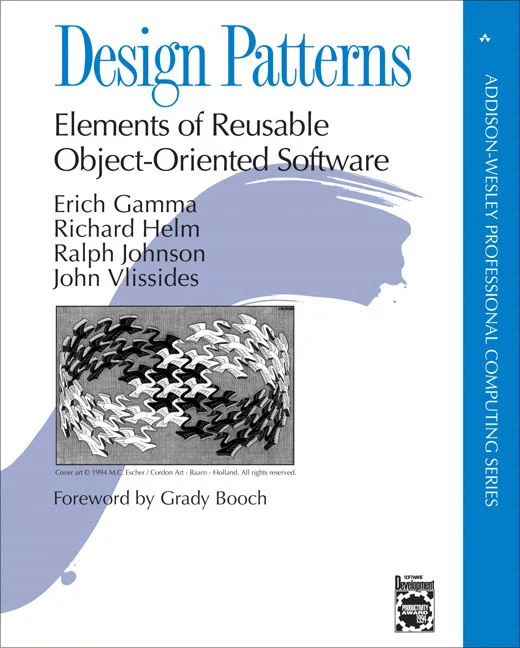 ??? - AUDIENCE QUESTION: Who is familiar with this book? --- class: single-image 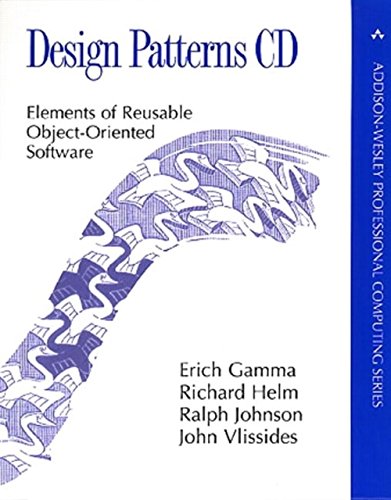 ??? - AUDIENCE QUESTION: Who remembers that there was a companion CD you could buy? --- class: single-image 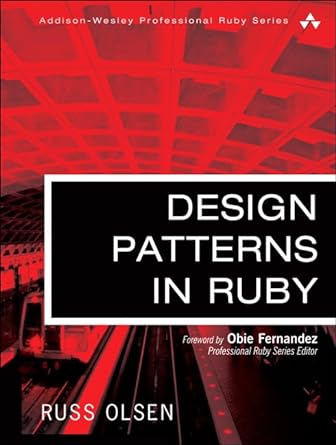 ??? - AUDIENCE QUESTION: Anyone familiar with the Ruby version? --- class: single-image 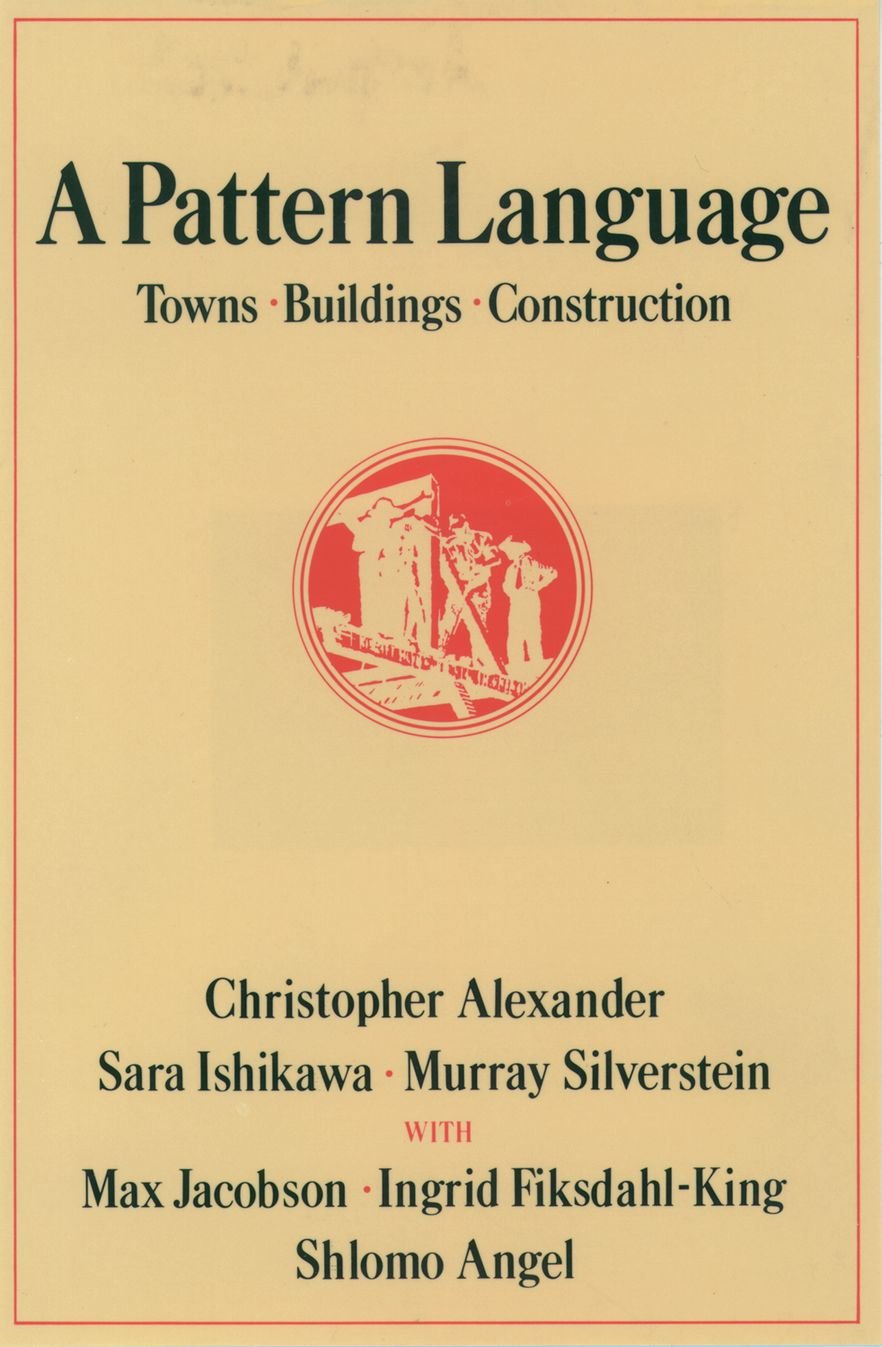 ??? - AUDIENCE QUESTION: Is anyone familiar with *this* book? --- class: agenda # Agenda - Software design patterns - History of design patterns - Architectural patterns (buildings) - Pattern languages - Compare and contrast - What have we missed? - Architecture "in the small" - Conclusions ??? --- class: transition, software-design-patterns # Software Design Patterns ??? --- # Software Design Pattern - General solution to a common problem - Not an algorithm - Not code - Blue-print of the outline of a solution ??? - Not code - cannot be copied and pasted - Not an algorithm - not that specific --- # Software Design Pattern - Name - Intent - Context - Problem - Solution - Cross-references ??? - Patterns help us use a common language to describe solutions to common problems - Intent: What are we trying to accomplish? - Context: Conditions under which the pattern holds - Problem: "System of forces" that leads towards some goal - Solution: configuration that balances the system of forces --- # Software Design Pattern - Examples - Singleton - Factory - Strategy - Template Method - Visitor - Null Object ??? - A singleton is a class that can only be instantiated once - A factory is a class or method that creates objects - A strategy is a class that provides an algorithm that can be swapped out - A template method provides a default implementation that can be overridden - A visitor is used to iterate over a collection of objects - A null object is used to provide a default implementation that does nothing --- # Software Design Pattern - Example - [Null Object](https://sourcemaking.com/design_patterns/null_object) --- # Software Design Pattern Categories - Creational - Structural - Behavioral - Concurrency - Architectural ??? - Creational patterns create objects - Structural patterns organize classes and objects to form larger structures - Behavioral patterns provide communication between objects - Concurrency patterns deal with multi-threading - Architectural patterns deal with high-level structure --- # Software Design Patterns - Criticism - Overuse - Wrong context - Limited reusability - Missing language features - Paradigm-specific - Not a substitute for experience - Not a silver bullet ??? - The first problem is that many developers misunderstand patterns - They try to take patterns and apply them to every problem - Instead, we need to think of patterns as a common language to describe solutions to common problems - Patterns can be very context-dependent - Reuse often isn't possible - We have to write the pattern every time - Components are a better way to reuse code - Many patterns are just a replacement for missing language features - For example, in machine language, a "subroutine" was a pattern - In Ruby, we have `Enumerable`, so we don't need the Iterator or Visitor pattern as much - In Ruby, mixins are just part of the language, so we don't think of them as a pattern - In Ruby, dependency injection just feels like passing in a parameter (with a default) - Most of the patterns in the GoF book are object-oriented - And of course, patterns are not a substitute for experience --- # Missing Language Features ~~~ java Iterator it = nodes.iterator(); while (it.hasNext()) { Node node = (Node) it.next(); node.doSomething(); } ~~~ ~~~ ruby nodes.each { |node| node.doSomething } ~~~ ??? ------ - https://wiki.c2.com/?DesignPatternsAreMissingLanguageFeatures --- class: transition # History of Design Patterns --- class: single-image  ??? - This is **the** software Design Patterns book - AKA the Gang of Four (GoF) book - Written by Erich Gamma et al - Covers 23 patterns - Mostly in Java and C++ - But the patterns are language-agnostic ------ - https://wiki.c2.com/?GangOfFour --- class: single-image  ??? - Erich Gamma: - Swiss computer scientist - 1988, started PhD - applying general idea of design patterns to software engineering - co-authored JUnit with Kent Beck - IBM Rational Jazz - Eclipse IDE (successor to Visual Age) - Visual Studio Code - https://wiki.c2.com/?ErichGamma --- class: single-image 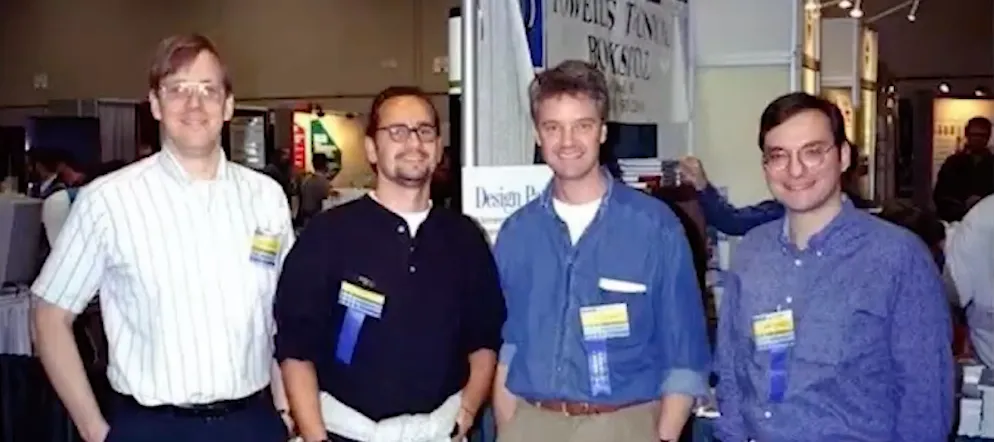 ??? - Richard Helm: - Australian software engineer and consultant - software architecture - object-oriented design - IT Strategy and IT transformation - https://wiki.c2.com/?RichardHelm --- class: single-image  ??? - Ralph Johnson: - American computer scientist - professor emeritus at the University of Illinois at Urbana-Champaign - Major contributor to the development of object-oriented programming and Smalltalk - https://wiki.c2.com/?RalphJohnson --- class: single-image 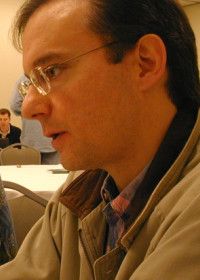 ??? - John Vlissides: - American software engineer and researcher - Stanford University & IBM Watson Research Center - software design and development - software visualization modeling tools and techniques - software design tools and techniques (especially object-oriented ones) - application frameworks and builders - tools for UI development - Interviews (competitor to X11) - https://wiki.c2.com/?JohnVlissides --- class: single-image  ??? - Grady Booch: - Forward of the GoF book - Object Analysis and Design with Applications (1993 book) - Booch Method - Coined the term "object-oriented design"? - Unified Modeling Language (UML) - IBM Rational - Rational Unified Process (RUP) - AKA Unified Software Development Process (USDP) - Book: The Unified Software Development Process - Software development process - Use-case driven - Architecture-centric - Iterative and incremental - IBM Research - Almaden - Chief Scientist for Software Engineering - "Handbook of Software Architecture" - My apologies to Grady Booch for having taken the `booch` username on GitHub ------ - https://wiki.c2.com/?GradyBooch --- class: transition # History of Design Patterns ??? - Prior to the GoF book, there was a community of people who were already using patterns - Ward Cunningham - Kent Beck - Martin Fowler - Ron Jeffries - Ralph Johnson - Erich Gamma - Richard Helm - John Vlissides - Grady Booch - James Coplien - Joshua Kerievsky - Michael Feathers --- class: single-image 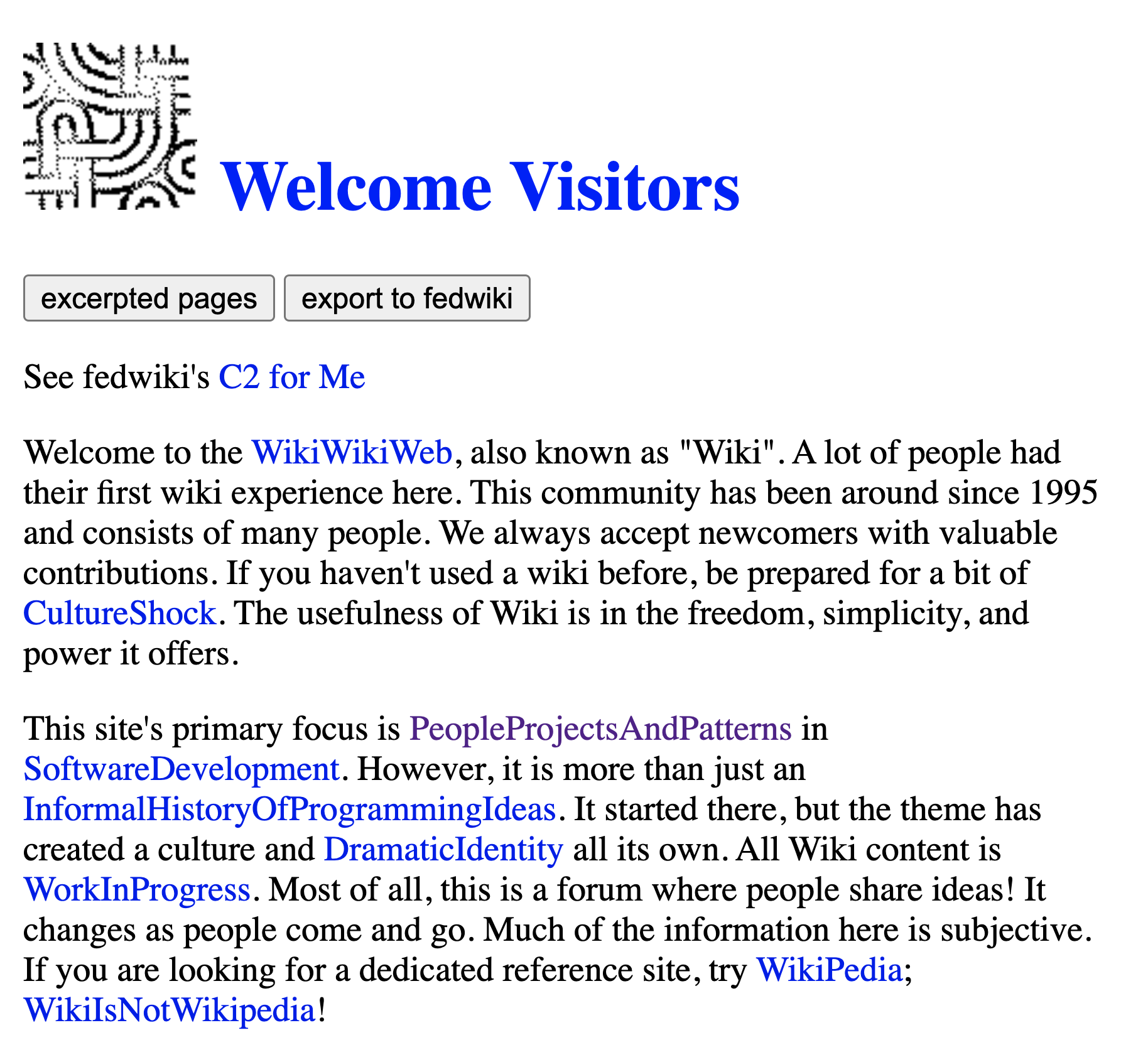 ??? - C2 Wiki - C2 = Cunningham & Cunningham, Inc - Design Patterns - Portland Pattern Repository (PPR) - People, Projects, Patterns - Ward Cunningham lives near Portland, Oregon --- class: single-image 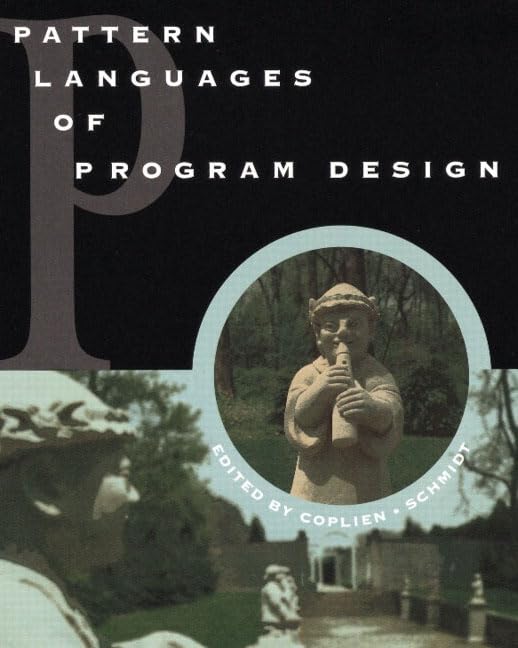 ??? - Jim Coplien, 1995 - I knew him from his book on C++ - Advanced C++ Programming Styles and Idioms - Also a conference: - Pattern Languages of Programs, 1994-present - PLoP - Hillside Group "A pattern language is an organized and coherent set of patterns, each of which describes a problem and the core of a solution that can be used in many ways within a specific field of expertise." - Wikipedia --- class: single-image  ??? - Ward Cunningham: - Invented the Wiki (1995) - Extreme Programming (XP) - FIT (Framework for Integrated Test) - Smalltalk - Eclipse Foundation - Agile Manifesto - Coined "Technical Debt" (1992) - Class-responsibility-collaboration (CRC) cards - Federated Wiki - Cunningham's Law - "The best way to get the right answer on the internet is not to ask a question; it's to post the wrong answer." - Ward and Beck - Graphical User Interfaces in Smalltalk book in 1987 - Based on Christopher Alexander's work - https://wiki.c2.com/?WardAndKent --- class: single-image  ??? - Kent Beck: - Apple - Extreme Programming (XP) - Test-Driven Development (TDD) - Agile Manifesto - Smalltalk - Smalltalk Best Practice Patterns - JUnit - "Make it work, make it right, make it fast" --- class: single-image  ??? - Martin Fowler: - Chief Scientist, Thoughtworks - Refactoring book (1999, with Kent Beck) - Patterns of Enterprise Application Architecture (2002) - Agile Manifesto - UML Distilled (1997) - Domain-Specific Languages book (2010) - Continuous Integration - Microservices - Domain-Specific Languages --- class: single-image 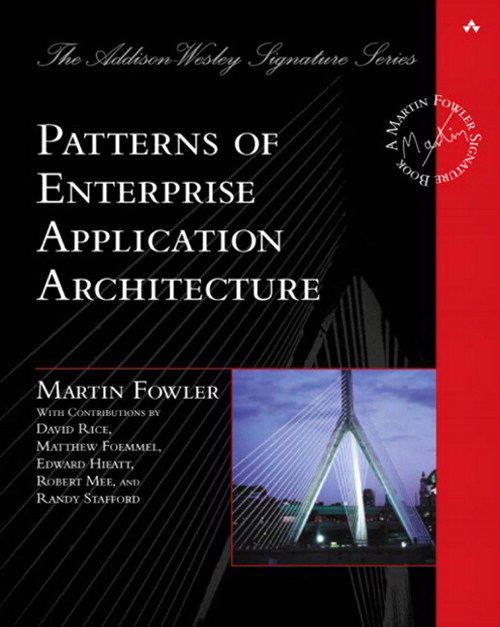 ??? - Patterns of Enterprise Application Architecture (2002) - Martin Fowler - 42 patterns - More patterns, targeted at larger systems - https://martinfowler.com/eaaCatalog/ - DHH learned patterns that he applied to Ruby on Rails - Active Record - Model-View-Controller --- class: transition # Architectural Patterns ??? - Where did the idea for design patterns come from? --- class: single-image  ??? - This is actually part of a series - The Oregon Experiment (1975, vol 3) - experimental approach to campus community planning - University of Oregon - testbed for ideas in the later 2 books - People centric - "feeling" should be the primary criterion used for making changes to any place - people can and should be involved in the design process of their spaces - resulted in a theory of architecture and planning - A Pattern Language (1977, vol 2) - We'll focus on this book - The Timeless Way of Building (1979, vol 1) - philosophical approach to architecture - introduces the concept of the "quality without a name" - we should seek to include this nameless quality in our buildings - Notes on the Synthesis of Form (1964) - Probably came into contact with Alexander's work via Edward Yourdon --- class: single-image  ??? - The first wiki led directly from Alexander's work, according Ward - Christopher Alexander - Designed and personally built over 100 buildings - both as an architect and a general contractor - Austrian-born British-American - UC Berkeley - architect and design theorist - Died in 2022 (age 85) - [The Nature of Order](https://en.wikipedia.org/wiki/The_Nature_of_Order) (2002-2004) - 4 books on architecture, urban design, and the nature of beauty - seems to be 12 books in the series now - https://wiki.c2.com/?ChristopherAlexander --- class: transition # Pattern Languages ??? - --- # Pattern Languages - Collection of patterns - Describes problems and solutions - Organized - Coherent - Specific field of expertise ??? - --- class: single-image  ??? --- class: single-image 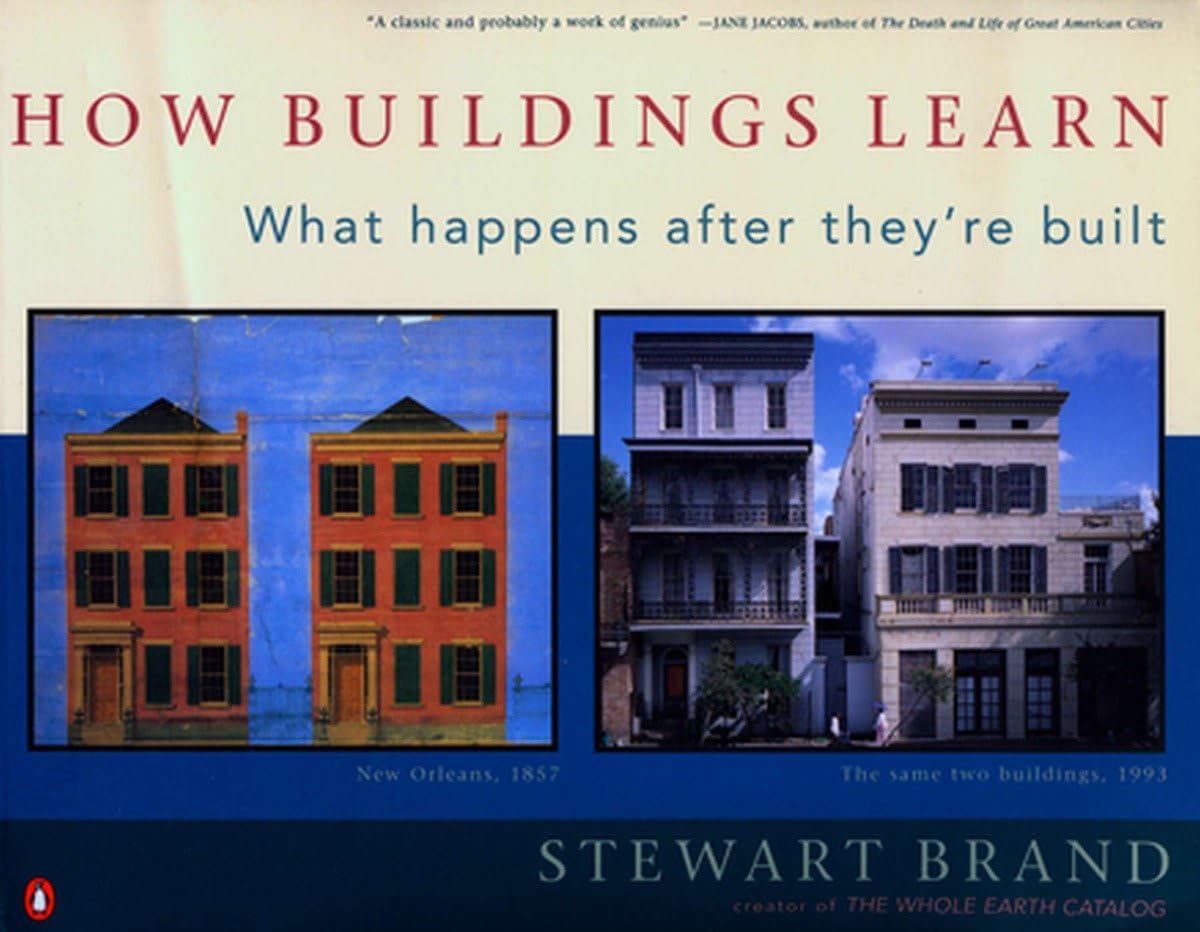 ??? - How Buildings Learn: What Happens After They’re Built (1994) - Stewart Brand - Inspired by Alexander's work - Extensive Christopher Alexander - 6-part TV series for the BBC - Aired in July-August 1997 on BBC2 - Music by Brian Eno - the best buildings are made from low-cost, standard designs that people are familiar with, and easy to modify - "Use materials that smell bad when they are wet" - So you know when there's a leak --- class: single-image 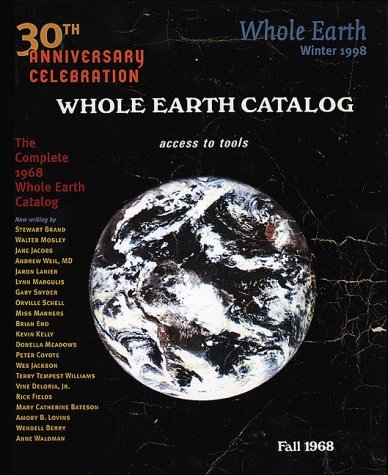 ??? - Stewart Brand, 1968-1972 - Stewart Brand - LSD studies (legal, early 1960s) - helped design and participated in Doug Engelbart's "mother of all demoes” (1968) - The Well (Whole Earth 'Lectronic Link) (1984) - first online community - Stanford - MIT Media Lab - coined the term "personal computer"? - first use of the term “personal computer” in print (1974) - Two Cybernetic Frontiers - director of the Electronic Frontier Foundation (EFF) (1990-1994) - Founded (with Danny Hillis) the Long Now Foundation (1995) - 10,000 year clock - 10,000-year Library - also Brian Eno, Esther Dyson - Long Bets ------ - “Why Haven’t We Seen A Photograph of the Whole Earth Yet?” (1966) - Legend has it that this accelerated NASA's making good color photos of Earth from space - The ecology movement took shape in 1970 partially as a result of those photos - https://sb.longnow.org/SB_homepage/WholeEarth_buton.html --- class: single-image  ??? - **This applies to software as well!** - Incremental change - Learning as you go - Choose the option that gives more options in the future - Adaptation to changing needs - "Maintenance is a form of evolution" - Buildings are predictions - All predictions are wrong - Ergo, design so that it doesn't matter when they're wrong - A building is never finished - [Shearing layers](https://en.wikipedia.org/wiki/Shearing_layers) - SITE: changes every 50-500 years - STRUCTURE: foundation & load-bearing, rarely changed - SKIN: changes every 20 years, air-tight, better insulated - SERVICES: changes every 7-15 years - SPACE PLAN: interior layout, walls, ceilings, floors, doors. changes every 3-30 years - STUFF: "mobilia" in Italian --- class: single-image  ??? - We shape our buildings, and our buildings shape us - Adaptation between buildings and users is slow and continuous process - Over 50 years, the changes within a building cost more than the original building - 3x more for a commercial building - 6x more for a residential building - Hire good builders and save money in the long run - "temporary" is permanent most of the time - Fail small, early, and often, and you will succeed in the long run - "A new building is a bad teacher of maintenance habits, since deferring of maintenance is habit. A building that has been maintained for a long time is a good teacher, since its maintenance is a habit." - In many fields, "architecture" means "unchanging deep structure". - TODO: More! --- class: transition # Large vs Small ??? - We think of architecture as "big" - Buildings - Cities - Software systems - But we can also think of "small" architecture - Rooms - Software components --- class: single-image 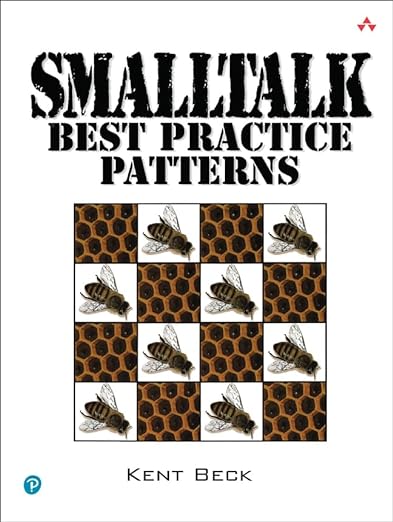 ??? - IMHO, one of the best books on Ruby - Released in 1996 - Nearly pre-dates Ruby! - Covers a lot of smaller patterns - TODO: Smaller pattern examples --- class: transition # Door Knobs --- class: single-image  ??? - I was surprised that Alexander's book didn't cover this - Door knobs are a relatively recent invention - 1878 - Lever handles are much older - I found 2 web pages that help choose which to use - Knobs have more styles available - Knobs can turn either way - Levers are easier to use - Levers can be used with your hands are full - Levers are easier for young people, old people, disabled people - Levers can easily snag on clothing ------ - https://www.suffolklatchcompany.com/blogs/news/door-knobs-or-door-handles - https://www.parkavenuelocks.com/blog/post/door-knobs-vs-door-levers-ending-the-debate --- class: transition # Buttons --- class: single-image 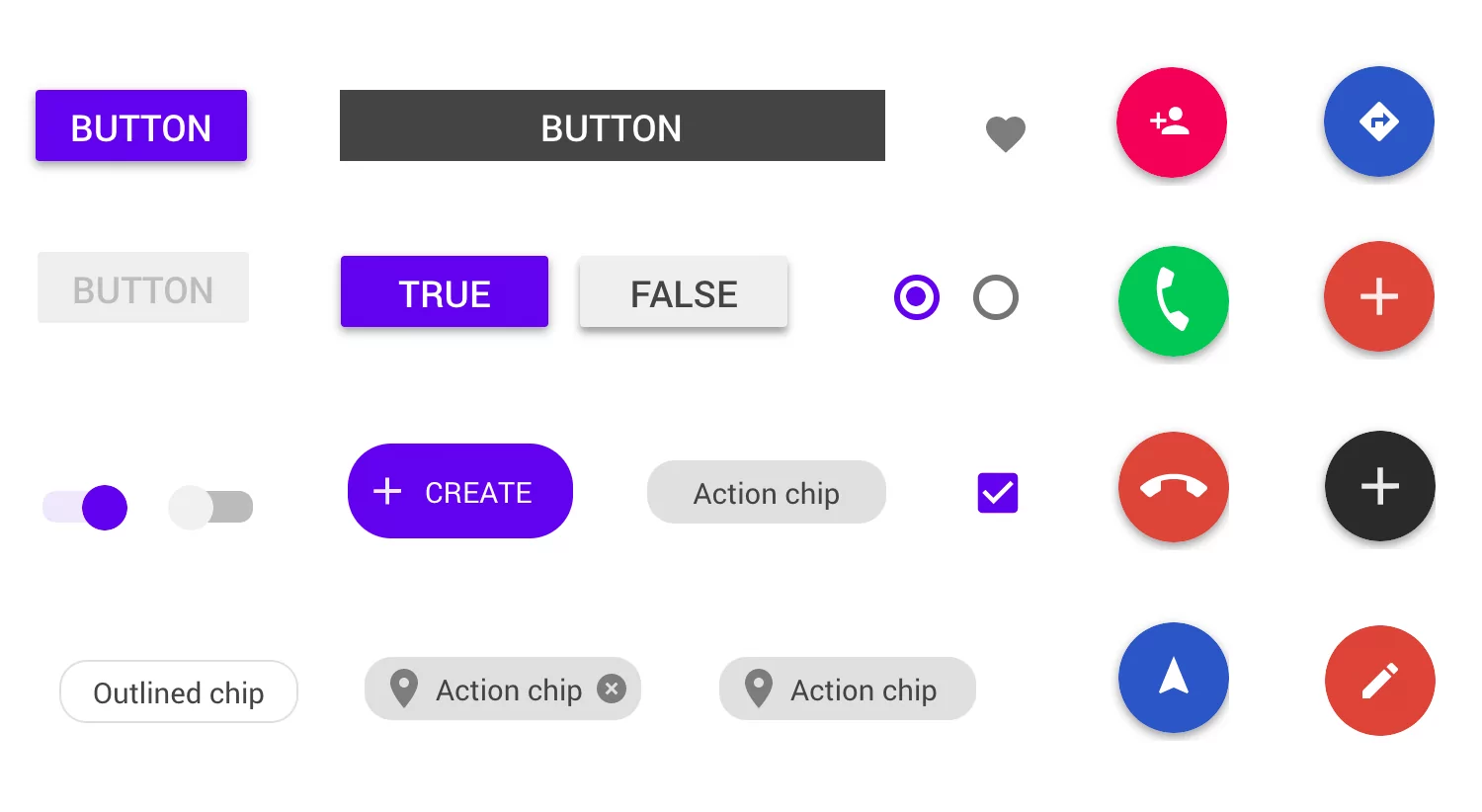 ??? - We rarely think of a button as an architectural element - But an architectural element is anything that is part of the structure of an application - or building - We should choose the right button for the right context - We should not have a "one-size-fits-all" button - But we should not have every button be different --- class: transition # Conclusions --- # Conclusions - Patterns are a way to describe solutions to common problems - Pattern languages give us a common language - Architecture is about structure - We can't predict what our future needs will be - So we need to design for change, evolution, and adaptation - Learning, habit, prediction, - The majority of the costs are in maintenance - Architecture is about people - How they interact with a space or a software application ??? - TODO --- # Resources - [Source Making](https://sourcemaking.com/design_patterns) - [Hillside Group](https://hillside.net/patterns/) - [Martin Fowler's Software Architecture Guide](https://martinfowler.com/architecture/) - [Wikipedia - Pattern Language](https://en.wikipedia.org/wiki/Pattern_language) - [Wikipedia - Software Design Pattern](https://en.wikipedia.org/wiki/Software_design_pattern) - [Using Pattern Languages for Object-Oriented Programs](https://c2.com/doc/oopsla87.html) - First paper on patterns in software ??? - There are a couple really good sites on Design Patterns - Source Making is one of the best - It's also great for info on refactoring and anti-patterns - [Refactoring Guru](https://refactoring.guru/design-patterns) seems to be the same site - But different (more on next slide) --- # Resources - [Design Patterns Reconsidered - Alex Miller](https://puredanger.github.io/tech.puredanger.com/2008/06/29/javaone-2008-design-patterns-reconsidered/) - [Christopher Alexander: An Introduction for Object-Oriented Designers - Doug Lea](https://gee.cs.oswego.edu/dl/ca/ca/ca.html) - [Patterns-Discussion FAQ](https://gee.cs.oswego.edu/dl/pd-FAQ/pd-FAQ.html) - [PatternLanguage.com](https://www.patternlanguage.com/) - [Awesome Design Patterns](https://github.com/DovAmir/awesome-design-patterns) --- # Resources - I've documented a few patterns that I found: - [Debugging Pattern – Grenade](https://web.archive.org/web/20161107180216/http://blog.boochtek.com/2012/01/11/grenade-debugging-pattern) - [Readable Shell Scripts](https://web.archive.org/web/20210510214107/http://blog.boochtek.com/2014/03/11/readable-shell-scripts) - [Ruby Pattern: Parameterized Module Inclusion](https://web.archive.org/web/20210510205350/http://blog.boochtek.com/2014/04/14/ruby-parameterized-module-inclusion) --- # Open to Opportunities * Principal Software Engineer * Ruby: 18 years * Devops: 11 years * Network Security: 7 years * Agile: 15 years * Resume: https://resume.craigbuchek.com ??? * I'm currently looking for my next great opportunity --- class: thanks, image-only # Thanks  ??? - Thank YOU for coming. ------ - Members of STL Linux meetup for feedback on a preview of the talk - Thanks to Madison Ruby for selecting my talk. --- # Feedback - GitHub: [booch][github] - Mastadon: [@CraigBuchek@ruby.social][mastadon] - Twitter: [@CraigBuchek][twitter] - Email: craig.buchek@gmail.com - LinkedIn: https://www.linkedin.com/in/craigbuchek - Resume: https://resume.craigbuchek.com - Slides: http://craigbuchek.com/arch - Source: https://github.com/booch/presentations ??? - One reason I give talks at conferences is to start a conversation. - Please don't hesitate to come talk to me. ------ - I used a tool called [Remark][remark] to create and show these slides. [github]: https://github.com/booch [mastadon]: https://ruby.social/@CraigBuchek [twitter]: https://twitter.com/CraigBuchek [remark]: http://remarkjs.com/ --- # Image Credits -